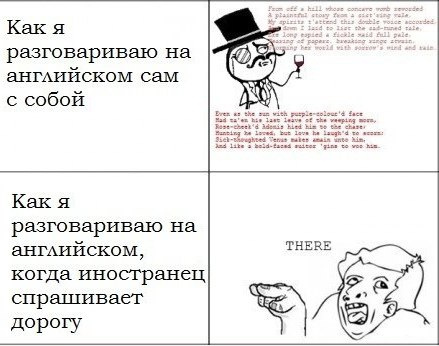
Many people think you need to live in a foreign country, have a close foreign friend, or spend long nights with your head buried in a boring grammar book, to master English…In fact, you can become a very successful learner of English if you follow some basic rules.
1. Relax and enjoy speaking
When you use English, don’t worry about making mistakes. The chances are you will always make small mistakes when speaking a foreign language. The important thing is to learn from the errors you make. Babies don’t learn to walk without falling over a lot!
2. Learn about how you learn
Recent research has shown that many of us have a preferred way of learning. If you are a visual learner, you can link language to pictures and images. Watch films with subtitles, try to visualise yourself in imaginary situations speaking English, fix words with pictures in your mind If you have an auditory style, you have a ‘good ear’ for language and should listen to as much music as possible and watch movies in English. If you have an analytic style, then spend time studying grammar and comparing Vietnamese with English. A learner with an interactive style needs to spend as much time as possible speaking with others, discussing language and generally working in a team. A really good learner spends time on all these styles. Yet it is a sad fact that all over the world, many people are still taught in a traditional style that favours analytic and auditory learners.
3. Learn memory techniques
There are plenty of books on how to improve your memory. It is a skill that the successful learners I know take very seriously.
4. Immerse yourself
I once visited the home of a Spanish student who was actually quite a successful businessman. His house was littered with those small pieces of yellow paper called post-it notes! Every time he went to the kitchen to make a cup of coffee, to the bathroom to shave or used the remote control to change channel, he looked at those words. Again and again and again. Once the word was fixed in his mind, he put the paper into a file that he looked through at the end of the week. This way, he learnt 10 words a day, seven days a week. Read, listen and speak English at every opportunity! The best musicians and football players practise their skill over and over. The skill of communicating in a foreign language is the same.
5. Get Connected
I recently met someone who three times a week leaves her small village outside Hanoi, travels 1 hour on a motorbike and when she arrives at her destination, speaks in English for two hours to her friends in Britain, Australia and the US. Her destination? An Internet Café with voice chat facilities in the nearest small town. When I met her, she had never spoken to a foreigner face to face before, but after only two months of practising, she could hold a conversation with me in English.
The Internet has brought so many benefits to language learners. You can find great sites for practising grammar, vocabulary, listening, pronunciation and now, most importantly of all, speaking.
6. Learn Vocabulary systematically
Remember that learning English is not just about learning grammar. When we speak, we express most of our ideas through our choice of vocabulary, through collocations and fixed expressions. Think carefully about how you organise your notebook, don’t just write a long list of new words! Try to divide your notebook into sections. Here are some ideas…
subject pages; shopping, holidays, money verbs and nouns that go together; do your homework; make a cake expressions which use common words; overweight, to get over something, over the moon phrasal verbs; to grow up, to tell off, to look after fixed expressions; on the other hand, in my opinion, by the way idioms; once in a blue moon, to be over the moon, out of the blue expressions with prepositions; at night, at the weekend, in March, in 1988
Finally….
7. Get motivated: don’t put off until tomorrow, what you can do today.
In London, I had a Thai friend who was attending university there, studying fashion design. Her English was excellent. She told me that when she was fifteen she decided that it was her dream to study fashion in the UK. She found out what IELTS score she needed and started studying right away. When she was nineteen and old enough to go, she was ready. Her early start was a smart move: when she returned to Thailand after a year, some of her friends were still studying English, waiting to go abroad to study. She is now fluent, well qualified and walked into a great job!